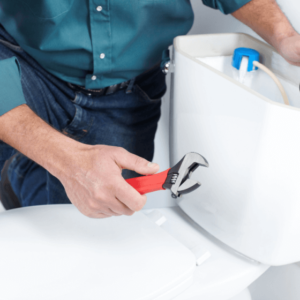One of the most versatile building materials developed in the last 100 years, modern silicone caulk is used in a wide array of home improvement projects. However, all silicone caulk eventually breaks down to the point where it can’t perform adequately and must be replaced. Here’s a rundown of everything you need to know about removing caulk.
What Is Silicone Caulk?
Silicone caulk is a silicon-based polymer sealant used to plug virtually any crack or gap imaginable. It’s commonly applied around windows, doors, and the bases of bathroom fixtures. Once cured, silicone caulk is impervious to water intrusion. What’s more, silicone caulk maintains a moderate degree of flexibility. As such, it can expand and contract as temperatures rise or fall.
Why Would I Need to Remove Old Silicone Caulk?
If you’re installing a new bathroom fixture or brick molding, you’ll need to replace the caulk around it. In addition, you’ll find that silicone caulk tends to degrade and crack over time. Consequently, removing the old caulk with a caulking remover tool and applying a new bead periodically is a must. You may also want to remove old caulk if it’s discolored.
The Benefits of Applying New Silicone Caulk
Routine silicone caulk cleanup and removal has a number of compelling upsides. Here are a few of the advantages of recaulking windows, doors, and fixtures.
Protection Against Property Damage
The whole point of silicone caulk is to prevent water and other fluids from getting into places where they don’t belong. Failure to properly apply silicone caulk and maintain it over time will inevitably result in damage to things like flooring and even structural members. A few dollars worth of silicone caulk can save you thousands in pricey home repairs.
Superior Home Aesthetics Inside and Out
Nothing makes a home improvement project look truly complete like a proper application of an appropriate silicone caulk. Many silicone caulks can be painted to match the materials they border once they’re dry. If you want your home to look like a million bucks, using a high-quality silicone caulk to seal gaps is a necessity. Using the right caulk removing products throughout the process is equally important.
A Cleaner, Healthier Living Space
The unwanted moisture that results from compromised silicone caulk can lead to the proliferation of mold and mildew given enough time. This is an especially likely outcome in areas like bathrooms, basements, and garages. Mold and mildew can lead to serious respiratory issues when left unchecked. Preventing the problem is easier than dealing with it later on.
How to Remove Old Silicone Caulk for Recaulking
If you want to know how to remove caulk from a shower or any other area of your house, these methods always pay dividends.
Scrape It Off With a Caulk Stripper
Most professional contractors and DIY home improvement enthusiasts simply cut old silicone caulk out with a homemade caulk remover. A utility knife or a flat scraper will certainly do the trick if you’re careful. However, a specialty caulk remover tool is highly recommended if you don’t want to damage the material next to the silicone caulk bead.
Pull It Out With Pliers
Depending on how degraded a bead of silicone caulk happens to be, it’s quite possible that you may be able to simply peel it off. A pair of needle-nose pliers is a handy tool to have around the house for such a job. A set of straight and hooked picks will also allow you to reach into tight cracks.
Break It Down With a Solvent
If you’re not in a big hurry, using a chemical solution to strip old caulk is a perfectly viable option. While there are many products on the market to choose from, a silicone caulk remover like Motsenbocker’s Lift Off is one of the best caulk remover products around. A caulk remover like Lift Off will tackle both silicone and latex caulk, as well as many popular foam sealants.
What to Do When the Old Caulk Is Gone
After you’ve removed the bulk of the old silicone caulk, it’s likely that there will still be some residue left behind. Be sure to clean up that mess before you apply the new caulk. Oftentimes, rubbing alcohol or mineral spirits are all you’ll need to achieve effective silicone caulk cleanup. Use a soft scrubbing pad to grind away the remaining caulk deposits.
Frequently Asked Questions
If you’ve ever wondered how to remove latex caulk, silicone caulk, or any kind of caulk, this quick FAQ should prove informative.
What Is the Easiest Way to Remove Caulking?
It depends on the situation you find yourself in. If the caulk isn’t terribly degraded, pulling it out in long pieces with pliers doesn’t get much easier. If the caulk is cracked and brittle, using a scraper is the fastest way to get it out. Applying a solvent will make the process less tedious no matter what tool you’re using.
What Will Dissolve Caulking?
The short answer is that nothing will actually dissolve silicone caulk to the point where it melts like a birthday cake in the rain. The best that you can do is use one of the solvents we’ve mentioned here to break it down a bit. These products will “digest” silicone caulk to a certain degree.
Does WD-40 Remove Old Caulk?
Yes and no. While WD-40 isn’t formulated to chemically break down something like silicone caulk, it can certainly loosen up particularly stubborn sealant. Just spray it on and let it sit for an hour. Be sure to clean up any remaining WD-40 with alcohol once the old caulk is removed to guarantee that the new caulk adheres properly.
Does Goo Gone Remove Caulk?
Yes! In fact, Goo Gone is an excellent caulk remover that’s every bit as good as something like Motsenbocker’s Lift Off. If you opt for Goo Gone, double-check the label to make sure you’ve grabbed Goo Gone Caulk Remover and not another product. Regular Goo Gone Adhesive Remover can also work in a pinch if need be.
How Do You Remove Silicone Caulk Without Chemicals?
There’s no need to use any chemicals when removing old silicone caulk. A little elbow grease and the appropriate tools will suffice. You don’t even need caustic chemicals to clean up the work surface before installing new caulk. A light scrubbing pad should be abrasive enough for your purposes. A diluted citric acid solution can also work if you have any handy.
Does Vinegar Dissolve Caulk?
Like WD-40, vinegar won’t magically dissolve silicone caulk. However, vinegar will loosen up particularly stubborn caulk if you don’t have a commercial caulk remover in your supply closet.
Vinegar can also be used to clean and disinfect gaps after you’ve pulled out all of the old silicone caulk residue. Stick with white vinegar for the best results.
How Do You Soften Caulking Before Removing It?
Applying both heat and a chemical caulk remover will soften caulk to a noticeable degree and make it far easier to scrape away. Start by warming up your caulk beads with a 1200-watt heat gun or a hairdryer. Once it has expanded, apply a silicone remover and wait for it to soak into the exposed cracks before getting to work with a caulking stripper.
How to Remove Caulk the Easy Way With True Value
Armed with a little know-how and a few inexpensive tools, anyone can make short work of silicone caulk removal and replacement tasks. You’ll find all the products you need for the job at your friendly neighborhood True Value. Use our convenient store locator app to find the nearest True Value and get the gear you want.













